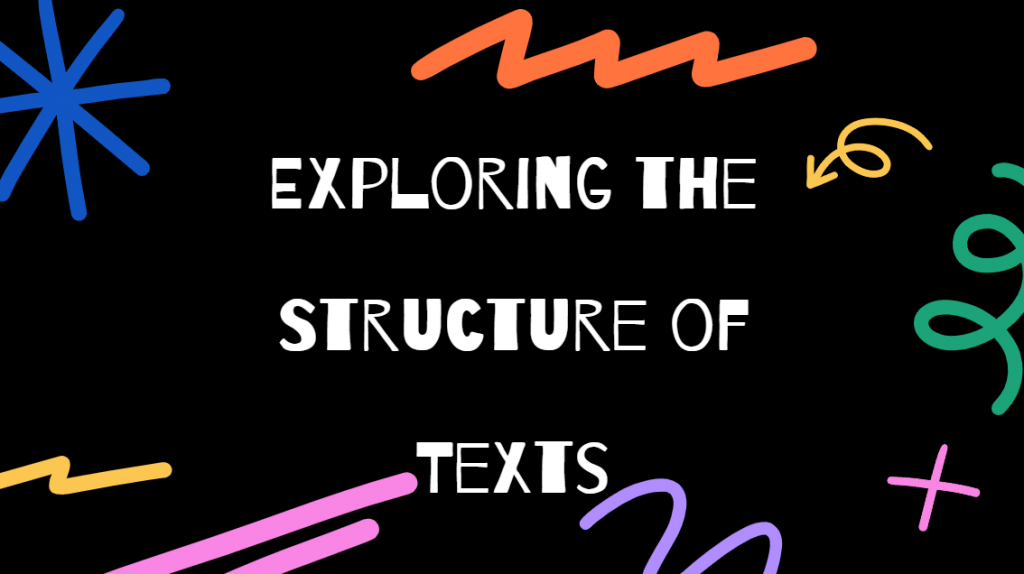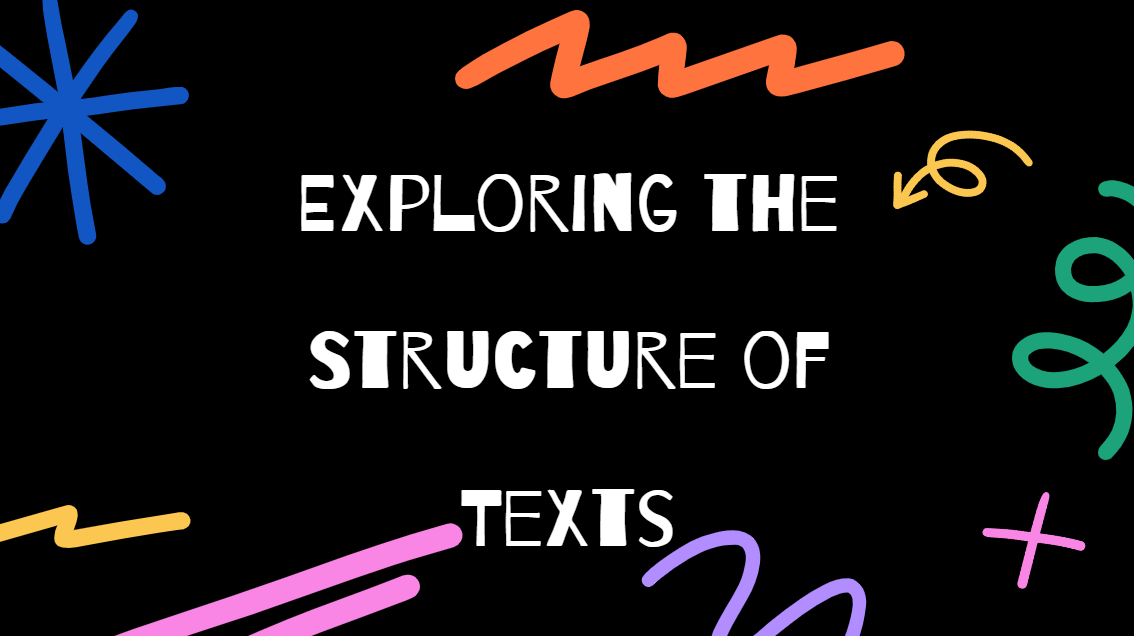Esta proposta de atividade de LÍNGUA INGLESA é destinada aos estudantes do 5º Período da Educação de Jovens e Adultos – EJA.

Disponível em: https://www.canva.com/design/DAGAEUE_-Sk/BsD5SsX8FtBcOTQ8vZTh3A/edit , acesso em 20, Mar.2023
Exploring the Structure of Texts
Texts, whether they are written, spoken, or visual, are composed with a deliberate structure to convey meaning, express ideas, and communicate with an audience. Understanding the structure of texts is fundamental to comprehending their content and interpreting the messages they convey.
Introduction: Establishing Context
At the beginning of a text, there is often an introduction that sets the stage for what follows. This introductory section provides background information, introduces the main topic or theme, and outlines the purpose or objectives of the text. It serves to orient the audience and capture their interest, providing a foundation for the subsequent discussion or narrative.
Body: Developing the Narrative
The body of a text is where the main content is presented, developed, and expanded upon. It comprises paragraphs, sections, or chapters that explore different aspects of the topic in depth. Within the body, authors may employ various organizational structures, such as chronological, spatial, cause and effect, or problem-solution, depending on the nature of the content and the intended audience.
- Chronological Structure: Information is presented in the order in which events occurred or processes unfolded. This structure is commonly used in historical accounts, biographies, and narratives.
- Spatial Structure: Content is organized based on physical space or geographical location. This structure is often employed in travel writing, descriptions of places, or spatial analysis.
- Cause and Effect Structure: Relationships between events, actions, or phenomena are examined to show how one thing leads to another. This structure is prevalent in scientific reports, investigative journalism, and explanatory essays.
- Problem-Solution Structure: A problem or challenge is introduced, followed by potential solutions or strategies for resolution. This structure is used in argumentative essays, policy papers, and self-help literature.
Conclusion: Wrapping Up
The conclusion of a text serves to summarize key points, reiterate the main argument or message, and provide closure to the discussion. It may also offer reflections, insights, or implications for further consideration. A well-crafted conclusion leaves a lasting impression on the audience and reinforces the significance of the text’s content.
Visual Elements: Enhancing Understanding
In addition to written or spoken words, texts often incorporate visual elements such as illustrations, diagrams, charts, or photographs to enhance understanding and engagement. These visual aids complement the textual content, providing additional information, clarifying concepts, or evoking emotional responses.
Final Thoughts
Understanding the structure of texts enables readers to navigate and interpret information effectively, discerning the underlying organization and logic that shape the message. By analyzing the components of texts and recognizing their structural patterns, individuals can deepen their comprehension skills and engage more meaningfully with the diverse forms of communication that shape our world.
QUESTION 01:
De acordo com o texto “Exploring the Structure of Texts”, o propósito da introdução em um texto é
(A) introduzir o autor e suas credenciais.
(B) estabelecer o contexto e capturar o interesse do público.
(C) apresentar os principais argumentos.
(D) concluir a discussão.
QUESTION 02
A parte de um texto em que o conteúdo principal é apresentado e desenvolvido em profundidade é
(A) a introdução
(B) o corpo
(C) a conclusão
(D) os elementos visuais
QUESTION 03
Por que entender a estrutura dos textos é considerado fundamental para a compreensão do conteúdo e interpretação das mensagens?
QUESTION 04
Como os diferentes tipos de estruturas organizacionais, como a cronológica, a espacial, a de causa e efeito e a de problema-solução, influenciam a forma como as informações são apresentadas e compreendidas pelos leitores?
| Autoria | Profª Drª Sueidy Lourencio |
| Formação | Letras Portuguese/Inglês – Doutorado em Educação |
| Componente Curricular | Inglês |
| Objetivos de aprendizagem e desenvolvimento | (EJALI0504) Compreender as estruturas que compõem um texto paracompreender sua finalidade |
| Referências | BRASIL. Ministério da Educação. Base Nacional Comum Curricular. Brasília, 2018.Goiânia. Documento Curricular Eja – 2023. Educação Física. Secretaria Municipal de Educação e Esporte. 2023Goiânia. Documento Curricular Para a Rede Municipal de Educação de Goiânia – EJA. Secretaria Municipal de Educação e Esporte. 2023Goiânia. Organização Pedagógica da EJA – 2023. Secretaria Municipal de Educação e Esporte. 2022Lei Federal n. 8069, de 13 de Julho de 1990. ECA – Estatuto da Criança e do Adolescente.GLENDINNING, Eric; POHL, Alison. Oxford English for Careers: Technology 2: Student’s Book. Oxford: Oxford University Press, 2011.SWEENEY, Simon. English for Business Communication. 2nd ed. Cambridge: Cambridge University Press, 2003. |

